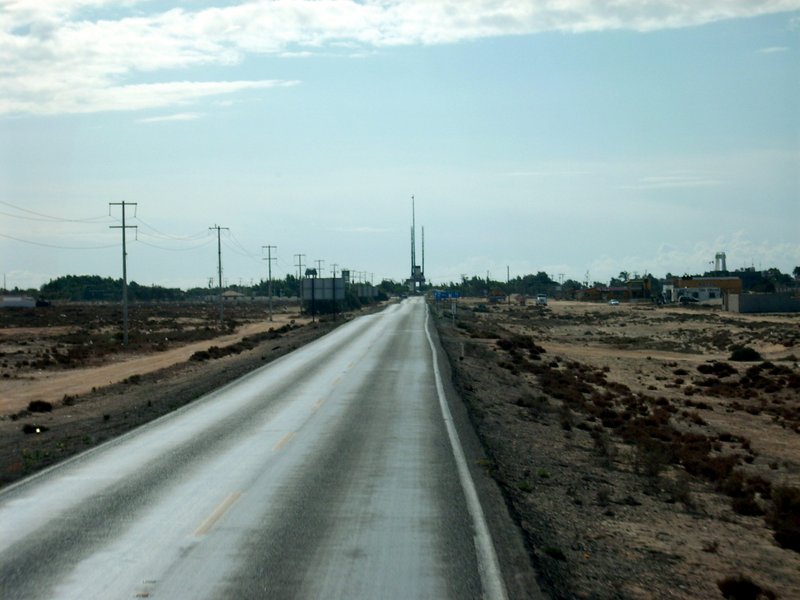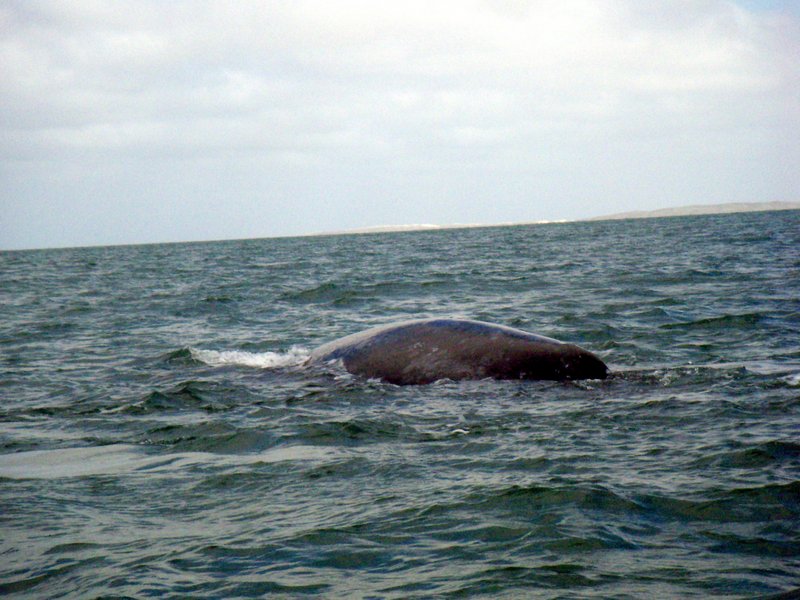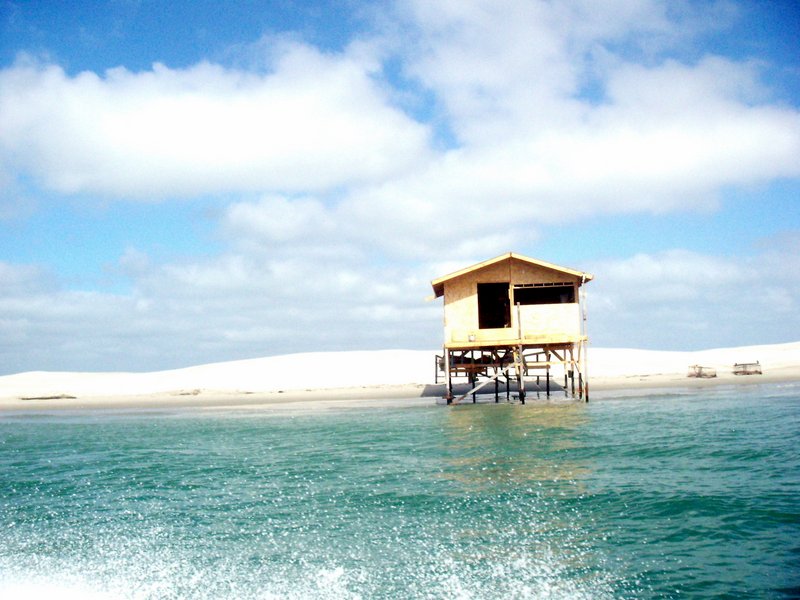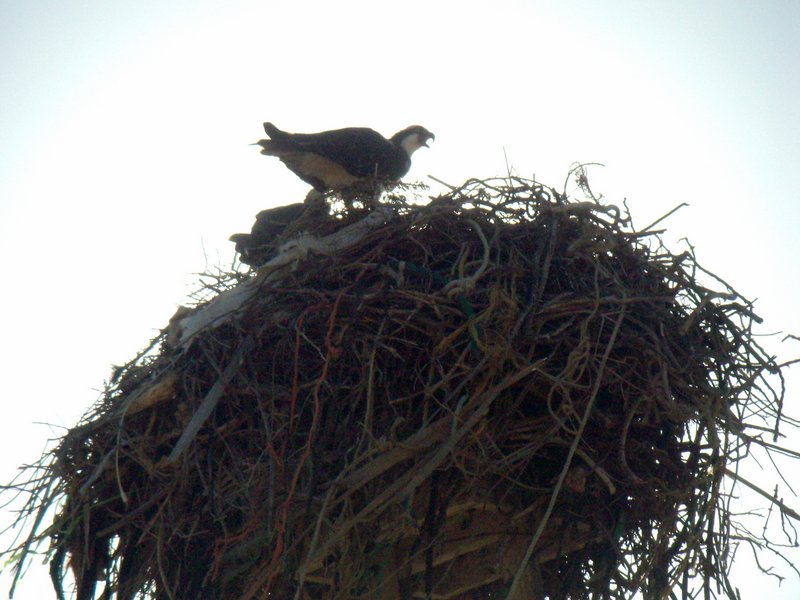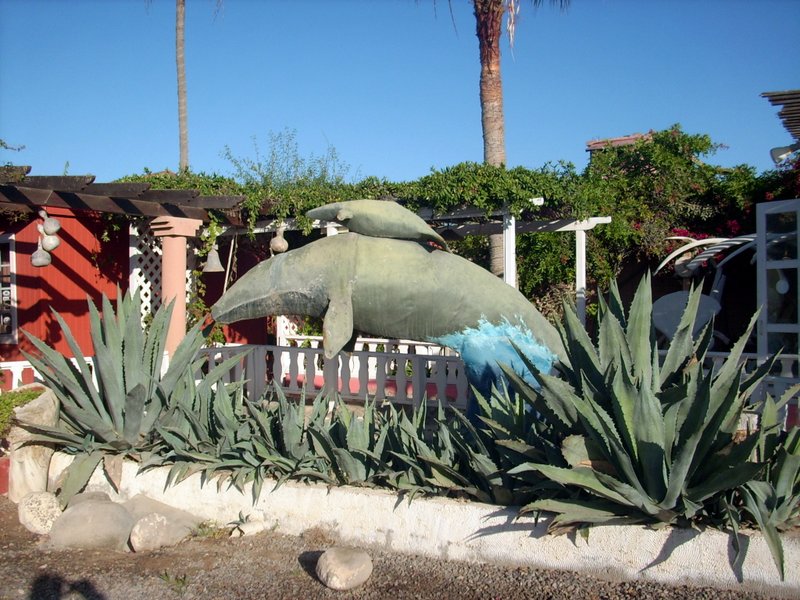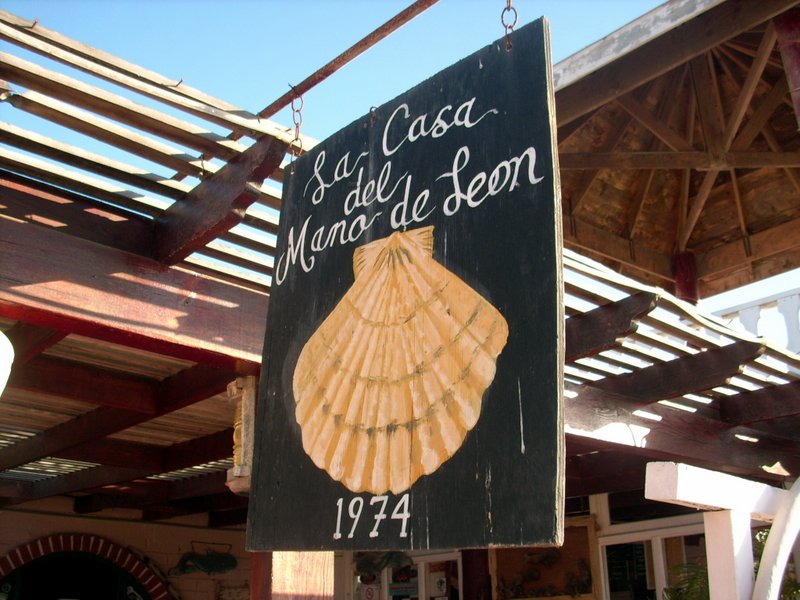
A Curious Name
The town's name means "Black Warrior" - this was the name of a ship which sank in the area in the mid 19th century. Not that there was a town here at this time, or even when John Steinbeck sailed down the Pacific coast of the peninsula in 1940. He makes no mention of the place in his "Log from The Sea of Cortez" because the town didn't exist until the 1950s.
A World Famous Whale Sanctuary
The said sunken vessel had been attempting to exploit the area's most famous natural resource, the Californian Grey Whales who calf here every winter. Thankfully the slaughter was ended before the species was hunted out of existence, and today Laguna Ojo de Liebre (Scammon's Lagoon) is the most populous of the cetaceous breeding grounds on the peninsula. For this reason it was inscribed as a UNESCO World Heritage Site in 1993, along with the cave paintings in the nearby Sierra de San Francisco. Guerrero Negro has become one of the world's most popular sites for whale watching.
The Largest Saltpans in the World
The whales come to Guerrero Negro due to the high salt content in the water, which assists bouyancy for their newly born. The laguna is surrounded by salt dunes, which give the area an otherworldly appearance. The abundance of salt led to a joint initiative of the Mexican Government and the Mitsubishi Corporation of Japan to create Exportadora de Sal, and the town came into existence as a consequence to house the employees of the new company. The bulk of the 7 million tons produced annually is exported to the far east, most of it ending up in factories and laboratories rather than on dining tables. The saltpans cover more than 100 square miles (or 33,000 hectares to be precise), and were the inspiration and location for 2007's serial killer thriller/chiller "Bajo la Sal" ("Under the Salt"). If you can get hold of the DVD do so, it has English subtitles for the main feature.
A Bird Sanctuary of International Importance
Co-existing with all these whales and salt workers are almost 100 species of birds. There's a sanctuary a short walk from the town (near the Banamex), which contains information about the species you can expect to see. In fact the whale and bird santuaries form part of the largest wildlife refuge in Latin America. The Desierto de Vizcaíno, declared a biosphere by the Mexican Government in 1988, is home to a diverse range of bird and animal species, most notably the ellusive berrendo (pronghorn), the fastest land animal in the Americas. Only the cheetah is faster on the entire planet, 104kph (65mph) as opposed to 86kph (53 mph), though the berrendo can maintain high speeds over much longer distances. Testament to its speed is the fact that I have no photograph of my own to show you, so here's a link instead. Despite the protection it is afforded the population of the Baja California subspecies is down to just a few hundred.
The Best Place to Eat Between Ensenada and La Paz
Restaurateurs in Loreto may disagree, but Guerrero Negro is a popular place to stop and eat, particularly for those breaking off from the 24 hour drive from Tijuana to Los Cabos. Mario's is popular, and the town has other options, but the name which quite rightly always pops up is Malarrimo. The restaurant is part of the hotel/RV park of the same name, and offers fresh meat, fish or seafood prepared to the highest standards, and at a reasonable price too. There's a separate bar alongside, decorated with flotsam recovered from nearby Malarrimo Beach. They also organise trips to see the whales, cave paintings or the saltworks and have a gift shop on site.
Visit Guerrero Negro with us as part of our transpeninsular tour, including a trip to either the Laguna, the bird sanctuary or the saltpans, depending on the season and your personal preference. Peak season for whale watching runs from January to March, though you may be lucky in December or April, depending on the migratory movements of the whales - nature follows no timetable! Visit our home page for itineraries, dates and prices.


